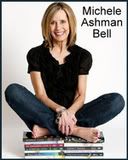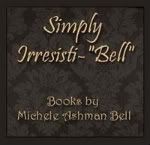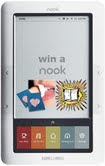
From the inside flap of jacket cover:
The hymn we have come to know and love as "A Poor Wayfaring Man of Grief" was originally written as an independent poem. Just days before Christmas, James Montgomery reflected on the cold and melancholy landscape surrounding him as he traveled alone by coach in December 1826. Finding a scrap of paper in his pocket, he set to work composing aspects of the prose he later entitled "The Stranger and His Friend." It was contained in a collection of his other writings printed in 1827 and was available in both Britain and the United States. It was not until several years later that others inspired by the poem's Christian message set the text to popular hymnal melodies which evolved in the hymn we recognize today.
This beautiful hymn, with its touching message, a favorite of many, has been brought to life in the pages of the book "A Poor Wayfaring Man of Grief" from Granite Publishing and Distribution. Rich and filled with emotion, each painting brings to life the words and meaning of the song, and allows the reader to ponder the message and become lost in each scene. What a wonderful addition to the family library and perfect gift for all ages and occasions.

About the artist: Sarah Merkley (1981- ) considers herself a student of life. She was born in New York City, but spent most of her life growing up across the United States, becoming familiar at a young age with different cultures and artistic styles. Her undergraduate studies were in Painting & Drawing but she attributes the framework of her artistic style to studying under both Patrick Devonas and Bill Whittaker, who emphasized the Academic approach to narrative figure painting. Sarah’s artistic ambitions are to convey narrative messages of humanity that all people can relate to. She currently resides in Salt Lake City, Utah with her husband.

About the text: James Montgomery (1771-1854) is renown for his written poetry and hymns. Born the son of a Moravian Church minister in Irvine, Ayrshire, Scotland, he eventually landed a career as writer, editor, and printer for the Sheffield Iris. Over the 30 years he oversaw the paper’s production, he was imprisoned twice for publishing material unfavorable with the current sentiments of the day. He was an avid abolitionist and social reformer, and devoted much of his time to writing Christian prose. Of the 400 hymns he composed in his lifetime, roughly 100 of them can still be found in print today. He is buried in Sheffield, England.
Here is my interview with Sarah:
M.B.: When did you first know you wanted to start this project?
Sarah: I have always loved the narrative quality of “A Poor Wayfaring Man of Grief” as a hymn, but few people seemed to be aware of the fact that the text went beyond the first three verses commonly sung. When they are all presented together, they become a very meaningful story. No one had ever portrayed the poem in a visual context, and I figured that if I were ever to attempt a large scale project that could be circulated to many other people seeking out an uplifting message, THIS would be the perfect way to do it. The book consists of a 14 piece series of paintings depicting all the verses of this prose, telling its story as it goes.
M.B.: What was the pathway like for you to get your first book published?
Sarah: I was fairly confident that this project would go over well, but I was new to the whole process. After completing the artworks, I took some time to research what kinds of markets I would want access to, how to compile a winning query letter, and narrowing down the list of publishers I wanted to submit the work to. I decided to send my submissions out in waves, shipping my project out first to the publishers most likely to show interest and had bigger names, and then a second tier of backup publishers should my Plan A not work out.
M.B.: Were you ever discouraged along the way? If so, how did you deal with it?
Sarah: I grossly misunderstood how much effort goes into getting your work accepted. My first tier of publishers I submitted to all sent me rejections, which I was quite surprised by, considering my work’s subject matter and intended audience. But that didn’t stop me. I was down for a handful of days, but had such confidence that this project of mine could make a tremendous impact if given a chance, that it wasn’t before long that I was sending out submissions again, this time with a handful of very positive responses.
M.B.: What is your painting schedule like?
Sarah: When I was painting this series, I was also working part time at a frame shop. I went in every other day, so on my days off I would play classical music or put on a book on CD and paint ALL DAY. Sometimes up to 12 hours a day. It was good for me to do this every other day so my brain and my sanity could have a little break and have intervals to rev up for the next painting session without getting exhausted.
M.B.: Where do your ideas come from? How do you know the idea is good enough to write a book about it?
Sarah: I studied the Narrative Figure, which is all about how to tell a story based on setting, gesture, tonal qualities, etc. I found it an intriguing challenge to dissect the text of James Montgomery- to think about what it was that he saw in his mind as he put together his poem. Also, as there are seven verses that essentially tell the same scenario of helping someone but in different ways, I put a lot of thought into how to differentiate each scene, just as opportunities of helping people throughout your life come from diverse circumstances as well. It was an idea that all people could relate to.
I knew the idea would be good enough to pursue as the hymn and its text hold not only a special place in the hearts of many Church members (it being a song Joseph Smith requested to hear in Carthage Jail) but also because it could deliver a universal message that applies to people of all backgrounds, denominations, and age groups. James Montgomery’s text captured the essence of Christ’s invitation to us all- that in serving others we are serving Him, and the good that we pass around to others will eventually come back to us. The book can be used as a tool of sharing common ground with not only those of our own faith, but those of other faiths as well. The message to be kind and charitable is a message to all people.
M.B.: What words of advice do you have for other writers who desire to have their manuscripts become books in print?
Sarah: Have confidence in your work, and the essence of your objective. Consider your target audience and how your work will best serve them. Don’t be discouraged if your first draft isn’t a masterpiece- consider it the skeletal frame of your work and do several drafts on it. A publisher’s rejection letter is not the end of the world- there are many publishers out there and usually it’s just a matter of finding the right one for you. Ask yourself, “how will this work influence someone’s life for good?” Get feedback from your most trusted critics (family, friends, etc) before sending your submission off- they will usually have fantastic insight to make your initial presentation better.
M.B.: What is your process of brainstorming a story? Do you just sit down and paint, waiting to see what happens next? Or do you outline first?
Sarah: My project was heavily outlined. Though each of the 14 paintings, I first mentally thought of my main character, what he should look like, what his demeanor should be, and who it was that he was assisting through the story. What was the time frame? The setting? How would these choices impact his actions? Each painting started with a rough pencil sketch of body gestures, then a grisaille (gray tone) study to give me an understanding of how the tones would balance, then selecting the models, then character scene photos with models in costume in various settings, then the final sized drawing which was then transferred to a canvas and painted. The whole process took about a year and various aspects would change or adjust as I went along (different gestures, props, colors, etc). But the brainstorming work I did at the beginning was invaluable- it was my road map of what I ultimately wanted to achieve, even if the result was somewhat adjusted through the process.
M.B.: Do you ever experience a snag in a story, a form of painter's block? If so, how do you deal with it?
Sarah: It was so all-absorbing for me, that I was usually thinking about it subconsciously throughout the day- driving to work, waiting in the elevator, chopping vegetables, brushing my teeth, etc. Because it was on the forefront of my mind, when a spark of inspiration would come from the outside I could catch it right away. So when I’d usually face a creative block I’d just go about my business but think about possible solutions, knowing one would eventually come. On some of those tenser creative situations, the BEST thing for me to do was go to sleep. A good night’s sleep would clear my mind from stress and trouble, and trigger a RESET button for the next morning.
M.B.: Do you need absolute quiet to paint? Do you listen to music when you are writing?
Sarah: Yes. Music that compliments the mood I’m trying to convey usually helped. New Age or Classical music was standard, but every now and then I’d need to hear someone else’s voice and would listen to NPR or check out a handful of books on CD from the library. I finished the last three Harry Potter books while painting. (I’m sure books on CD would work better for painters instead of writers for obvious reasons though…)
M.B.: What kinds of inspiration do you use during your story creation periods?
Sarah: I think of stories that have stood the test of time- a lot of Charles Dickens work, Victor Hugo, Jane Austen- lots of authors from the Romantic period about social change. There are elements to their work that people can relate to because of their universal application. People tend to gravitate towards stories with meaning they RELATE to, so channeling a similar mantra was important for the work I was pursuing as well- “can people relate to this?” was a question I constantly asked myself.
M.B.: Who has made the greatest difference for you as an artist?
Sarah: The Romantic period of artists, authors, poets, architects, and political reformers (the late 1700s through the mid 1800s). Their ideals and objectives speak to me. Because I am uplifted and motivated by their works, I desire to imitate their impact. (Imitation is the sincerest form of flattery )
M.B.: Do you use a critique group during the creative process? Why or why not?
Sarah: Yes, inasmuch as I develop my ideas to a semi-polished stage where I feel fairly good about them and THEN ask for outside criticism. It’s important to believe in the direction you are going, but ALSO important to get an opinion from outside of your own perception. You don’t have to take the criticism, but it’s good to have it on hand to keep you balanced.
M.B.: Which of your books is your favorite, and why?
Sarah: “A Poor Wayfaring Man of Grief” is my only book thus far, so that would have to be my favorite.
M.B.: Where can our readers go to find your books and order them?
Sarah: I believe it’s currently being carried by a number of independent LDS bookstores, the BYU bookstore, and Granite Publishing (granitebooks.com) (I would check with Granite to see if they’ve been able to get them in to any other locations in the last few months…)
M.B.:Who is your intended audience and why?
Sarah: I’m a visual learner, and so conveying the text of this message with narrative images further enlightens it’s message for me. I collaborated these works together in a book format primarily to be a book read to children. For those who can’t read yet, it teaches them the same message of charity and service through illustrative means. For those who can read, it gives them further exposure to beautifully written prose that isn’t simplified- giving them opportunity to stretch their vocabulary and understanding to see how wonderful it is to read when choice words are put together (i.e. poetry). For bigger and more foreign words, there is hopefully an opportunity given for adults to be in a teaching/learning environment- to explain context and scenario, and how the words and images compare to each other. Not only that, but it will hopefully give kids motivation that they too can be charitable in their own capacity- there’s no ONE way to render service to someone. What an important lesson to learn early on in life.
Sarah, thank you for taking time out of your busy schedule and sharing your story with us. I hope everyone who reads this will go out and buy it. It's a beautiful book.



























































-page-001.jpg)














5 comments:
This sounds like an interesting read. I don't know that the backstories of hymns are well known and I'm especially interested in this hymn.
I'm so excited about this book! Thanks for the interview, Michele!
I own this book and find it to be inspiring every time I read it. Sarah did an incredible job at visually depicting the universal message of charity.
Michele we want you guys to come down so so so so so so so (1 million so's)badly!I miss you all so much! I feel like I havn't seen you guys fffffooooorrrreeevvvveeeerrrr!
Oh it sounds wonderful! I found your blog through Kimberly's and I'm excited to read more! Great interview!
Post a Comment